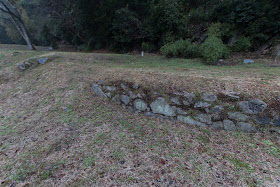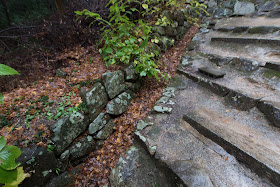-Isolated heaven of Nobunaga-
Overview
Name: Azuchi castle (Azuchi-jo /Azuti-jo/Aduchi-jo)Alias:
Place: Azuchi-cho Omi Hachiman city, Shiga
Location: 35.155970819603105, 136.13995524641118
Type: Hill castle
Built: 1579
Remaining remnants: Stone walls, three story tower and gate of Sokenji temple
Title: 100 famous Japanese castles, National Monuments of Special Historic Sites
Azuchi castle (安土城) is located on-Azuchiyama hill in Azuchi town Omi Hachiman city, at the south shore of Lake Biwako. Azuchi castle was built as a residence of ruler Nobunaga Oda in 1579, but after the death of him at the accident of Honnoji at 1582, among the chaos after the accident buildings were lost. Later the castle was abolished.
Type: Hill castle
Built: 1579
Remaining remnants: Stone walls, three story tower and gate of Sokenji temple
Title: 100 famous Japanese castles, National Monuments of Special Historic Sites
Brief History
History of Nobunaga Oda
Nobunaga Oda (1534-1582) was originally a local lord of Owari province (western Aichi prefecture). His house was formerly a retainer of deputy governor of Owari province, but he united Owari province defeating other local lords by power. Next he beat Yoshimoto Imagawa (1520-1560), a warlord of Suruga province (Shizuoka prefecture) and who aimed at Owari at the battle of Okehazama in 1560, then he became one of powerful warlords.
After occupation of Mino province (Gifu prefecture) and north half of Ise province (Mie prefecture) at 1566, in 1567, Nobunaga advanced to Kyoto, current capital of Japan, with Yoshiaki Ashikaga (1537-1598), the younger brother of assassinated 13th shogun of Muromachi shogunate Yoshiteru Ashikaga, and established his government under Yoshiaki who became 15th shogun. Later Nobunaga became hostile with Yoshiaki and was in crisis surrounded by encircling enemies such as Honganji temple, Azai clan, Asakura clan and Takeda clan in 1573, but Nobunaga got over this situation and established his hegemony as a ruler.
He frequently tripped between Gifu castle (Gifu prefecture), his residence and Kyoto city, the source of authority, and if necessary stayed at Sawayama castle (Hikone city), located on the southeast of Lake Biwako and managed by Nagahide Niwa (1535-1583), one of his important retainers.
Build of Azuchi castle
In 1576, Nobunaga decided to build a new castle on a hill of Azuchiyama, and orderd construction to Nagahide. Azuchiyama is one of the northward ridge of Kannonyama, where Kannonji castle located, protruding into Lake Biwako. Formerly surrounded by lake water except for south front, but now surrounding area became land due to reclamations. Azuchi is located at the center of plain area in east shore of Lake Biwako, and a place can control Nakasendo way to Eastern countries, Hokkokukaido way to Hokuriku region and Tokaido way to Tokai region in front of Kyoto.
After the continuous construction, by 1579, Azuchi castle was completed. Having all elements of Japanese modern castles, it means stone walls ,and buildings placed on foundation stones and roofed by blocks, Azuchi castle was a first compilation of modern castle technologies and model of succeeding castles.
Structure of Azuchi castle
On the top of the hill, a central area completely surrounded by stone wall was built. There was no clear evidence on the building of the castle, but it is said that the main tower had five story exterior and six floors inside with basement, consisted of two story watching tower placed on the a scalene octagonal plain shaped basement building of three floors. Inside the tower there was a large stairwell in the building, and the wall of top floor and floor under top floor were painted as gold and bright red respectively.
There was also a magnificent palace in the central area, where Nobunaga lived and was said to be prepared to invite Emperor. Close guards of Nobunaga had each houses around the gate into the central area, and on the way from outer area to central area there was a residence of Nobutada Oda (1557-1582), the son and successor of Nobunaga.
From the bottom to halfway of the front side of hill, there was a wide main street, and both of this there were residence of important retainers, such as Hideyoshi Toyotomi or Toshiie Maeda at the terrace of hill. Each compartment of residence had stone walls and structured gate, and worked as a defense facility in case of need.
On the west side slope of the hill, there was a temple named Soukenji temple built by Nobunaga. Nobunaga is famous for oppressing religious powers such as Honganji denomination or Enryakuji temple and said to hope to be worshiped as god, but Sokenji was a quite ordinary temple.
Continue to part 2


















































































































































































































































No comments:
Post a Comment